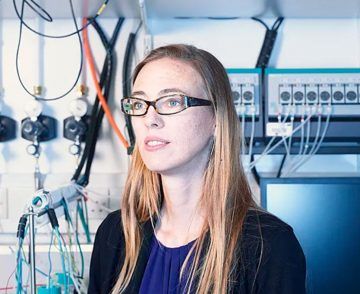 Clive Cookson in the FT:
Clive Cookson in the FT:
Madeline Lancaster opens the door of a fridge-sized incubator in her lab at the University of Cambridge’s biomedical campus. On its gently gyrating shelves sit glass dishes containing a pinkish liquid. She takes one of them out to show what lies inside. Sitting in the nutrient fluid are half a dozen lumpy white blobs, roughly the size of large lentils.
“These are cerebral organoids, or mini-brains for short,” says Lancaster in a soft American voice. “They are three-dimensional neural tissues generated from human stem cells which allow us to model human brain development.”
“They are self-organising,” she adds. “We’re allowing these cells to develop on their own in a 3D conformation, which is the way the brain develops naturally.” Viewing an organoid through Lancaster’s high-powered microscope, its million or so neurons look like an entangled cellular web very similar to an embryonic human brain.
Lancaster pioneered the cerebral organoids field, making the world’s first mini-brains in 2011 while working as a postdoctoral researcher at IMBA, Austria’s Institute of Molecular Biotechnology in Vienna. She moved in 2015 to set up her own lab in Cambridge at the Medical Research Council’s Laboratory of Molecular Biology (LMB).
More here.
